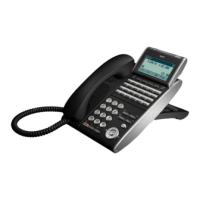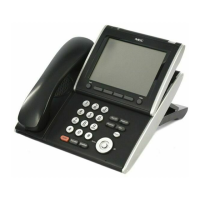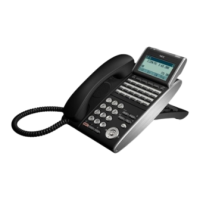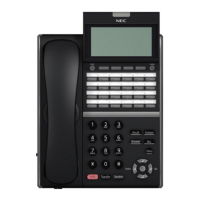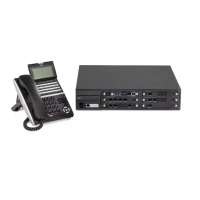All DSP Busy Indication
SECTION 1 INTRODUCTION
The All DSP Busy feature is used to alert users via telephone displays and/or Alarm reports when all
DSP (VoIP) resources in the system are being used. This can be used to trouble shoot issues or to
alert when the current hardware might need to be upgraded to a higher capacity.
Alarm Message Format:
The Alarm message for will vary depending on what type of resource is unavailable, and will be
displayed on display telephones and included in reports.
Table 12-1 Alarm Types
Parameters Description
STA DSP for IP Station Calls Were All Busy.
TRK DSP for Trunk Calls Were All Busy, includes SIP.
Alarm Report Example:
The report example below shows an alarm for all busy Station and Trunk DSPs.
<< ALARM REPORT >>
01/22/2009 23:37
LVL NO STAT DATE TIME ITEM UNIT SLT PRT PARAMETER
MAJ 0068 ERR 01/22/09 09:30 VoIP All DSP Busy VoIPDB 01 00 STA
MAJ 0068 ERR 01/22/09 09:31 VoIP All DSP Busy VoIPDB 01 00 TRK
MIN 0002 REC 01/22/09 09:32 PKG Installation PRIU 02 00
LCD Display
LCD Display Indication Note
Clock/Calendar XX = Slot number of CPU with VoIPDB.
VoIP All Busy XX
Soft Key
SECTION 2 SERVICE CONDITIONS
• When using IP Phones, the alarm is shown on both terminals involved in that call if they are both on
the same system.
• The alarm cannot be displayed on Standard SIP Phones or Single Line phones.
• If a call from a Standard SIP telephone to a Multiline telephone cannot be established due to an All
DSP Busy condition, the Multiline telephone will not display the “All DSP” busy message.
• If a SIP trunk call is sent to the SL2100 when all DSP resources are busy, the call is rejected but the
alarm is not displayed on any system telephone.
Networking Manual
12-1
All DSP Busy Indication
12

